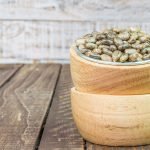Aromatherapy in the Treatment of Chronic Pain
By Shaida Sina, NMD
Chronic pain affects some 80 million Americans who are paying approximately $70 billion per year in its treatment. Increasingly, aromatherapy has been used as part of an integrated, multidisciplinary approach to pain management. It is important to understand when treating pain through aromatherapy, it is best to use an eclectic approach to treatment. For example, aromatherapy/essential oils should be used along with other modalities such as hydrotherapy, acupuncture, physical medicine and nutritional supplementation.
Pain can have various etiologies. Aromatherapy has the unique ability to not only treat a patient physically, but to also help with emotional issues. Aromatherapy is thought to enhance the parasympathetic response through the effects of touch and smell, encouraging relaxation at a deep level. Relaxation has been shown to alter perceptions of pain.
On a psycho-spiritual level, this plant substance can trigger memories (good or bad). When memories come up, a skilled practitioner in mind/body therapy can do emotional release techniques. Conditions such as fibromyalgia often have both a physical and mind/body component which need to be addressed.
Most health-care practitioners view aromatherapy as a luxury therapy used mainly by massage therapists. Many naturopathic physicians underestimate the value of essential oils due to limited training.
Essential oils are concentrated volatile oils found in plant substances. They are stronger than extracts, teas and dried herbal capsules. They are unique to work with because they can be applied topically or given internally. This is where it gets tricky_understanding which oils can be used in what application. Choices include straight or “neat,” diluted with a carrier, or administered topically or internally.
There are various treatments which can be used for muscular pain. All treatments should be done by first using test areas. A history of the patient should be taken to evaluate if application is appropriate.
Protocol 1: Rub
- _ oz. castor oil
- _ tsp. cayenne pepper
- 1 mL essential oil of peppermint
- 1 mL essential oil of eucalyptus
Mix ingredients and apply to area of pain. Castor oil is a great carrier because it helps to move lymphatics. For toxic individuals, castor oil can move built-up lactic acid and stagnant lymph fluid. The therapeutic action of peppermint essential oil includes anti-microbial, anti-inflammatory, stimulant and analgesic. The therapeutic properties of eucalyptus include analgesic, antiseptic, antispasmodic and stimulant. Cayenne pepper is used as a dried herb, not as an essential oil. Cayenne pepper has the ability to deplete substance P, which in turn will reduce pain. Care should be taken not to touch mucous membranes following application. Wash hands thoroughly.
Protocol 2: Rub
- 1-2 drops essential oil of ginger
- 3-5 drops tincture of lobelia
Apply directly to spasm. This is a great protocol for trigger-point therapy. You can use these both straight. Gently work the muscle spasm out and then give an adjustment. Essential oil of ginger is extremely strong; much stronger than boiling the root and more convenient to use. The therapeutic properties of ginger include analgesic, antiseptic, antispasmodic and stimulant. Ginger is a rubefacient, so care should be taken not to touch mucous membranes following application. Hands should be washed well. Lobelia is an antispasmodic herb. It has been used for asthma and muscle spasm.
Protocol 3: Bath
- 15-30 drops essential oil of lavender
- 2 cups epsom salts in a hot bath
Soak in the bath for approximately 20 minutes. This treatment can be modified for local application using one gallon of hot water instead. Apply as a hot compress. Hydrotherapy is an ancient healing modality which works well for pain relief. Epsom salts are made from magnesium sulfate. Magnesium can help relax muscle by dilating vessels so there is more blood at the peripheral tissue level. Some of the therapeutic properties of essential oil of lavender include analgesic, antirheumatic, antiseptic, antispasmodic, nervine and sedative. Other oils which can be added to a bath to help relieve pain include geranium, hops, valerian and ylang ylang. Keep in mind the genitals can be very sensitive, so choose oils that are not rubefacients. If you are a health-care practitioner treating many patients, consider using gloves since oils have a cumulative effect and can be toxic in high doses.
 Shaida Sina, ND has been working in the field of medicine for more than 20 years. Her initial training began as a clinical scientist where she received her bachelors of science degree from University of Maryland’s School of Medicine’s Department of Medical and Research Technology. During her first 10 years in healthcare, she worked in the field of laboratory medicine where she ultimately became lead technologist of a reference infectious disease laboratory. Dr Sina began her studies in natural medicine in 1995 at Southwest College of Naturopathic Medicine, Tempe, Arizona. She has an extensive background in infectious disease and has trained at the Being Alive Center (an HIV center) located in Phoenix. Dr Sina was the first naturopathic physician to do a clinical rotation at Mayo Clinic where she trained in Reproductive Endocrinology. Dr Sina completed post-doctorate training and received certification in the field of environmental medicine with an emphasis in chemical and metal detoxification.
Shaida Sina, ND has been working in the field of medicine for more than 20 years. Her initial training began as a clinical scientist where she received her bachelors of science degree from University of Maryland’s School of Medicine’s Department of Medical and Research Technology. During her first 10 years in healthcare, she worked in the field of laboratory medicine where she ultimately became lead technologist of a reference infectious disease laboratory. Dr Sina began her studies in natural medicine in 1995 at Southwest College of Naturopathic Medicine, Tempe, Arizona. She has an extensive background in infectious disease and has trained at the Being Alive Center (an HIV center) located in Phoenix. Dr Sina was the first naturopathic physician to do a clinical rotation at Mayo Clinic where she trained in Reproductive Endocrinology. Dr Sina completed post-doctorate training and received certification in the field of environmental medicine with an emphasis in chemical and metal detoxification.









